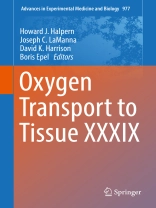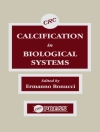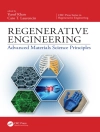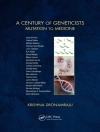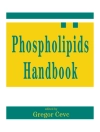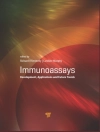This volume presents all aspects of delivery of oxygen to tissues and tumors in peer reviewed short articles. Both overview and the most recent, advanced techniques for oxygen measurement are presented. Articles and peer reviewers include those from leaders in their field. Topics such as molecular signaling in the organismal and tumor response to low levels of local oxygenation, hypoxia inducible factor (HIF) , cancer metabolism, individual human and animal response to oxygen changes monitored by optical/near infrared spectroscopy/ tomography to novel electron resonance spectroscopy and spectroscopic imaging, instrumentation, progress in blood substitute research, retinal physiology, cellular hypoxia, mitochondrial function; brain oxygenation and function; oxygen transport in sports, hypoxia in diseases and clinical care.
Chapters 10 and 19 of this book are open access under a CC BY 4.0 license.
İçerik tablosu
Part I Cell Metabolism, Tissue Oxygenation and Treatment.- 1. Oxygen Sensing by the Carotid Body: Past and Present.- 2. Predicted Decrease in Membrane Oxygen Permeability with Addition of Cholesterol.- 3. Chronic Diseases as Barriers to Oxygen Delivery-A Unifying Hypothesis of Tissue Reoxygenation Therapy.- 4. Dorsiflexor Muscle Oxygenation during Low, Moderate and Submaximal Sustained Isometric Contraction.- 5. Factors Determining the Oxygen Permeability of Biological Membranes: Oxygen Transport across Eye Lens Fiber-cell Plasma Membranes.- 6. Multi-site Measurements of Muscle O2 Dynamics during Cycling Exercise in Early Post-Myocardial Infarction.- 7. Effects of 8 Weeks’ Training on Systemic and Muscle Oxygen Dynamics in University Rugby Players.- 8. Imaging Redox State in Mouse Muscles of Different Ages.- 9. Amino Acid Hydration Decreases Radiation-Induced Nausea in Mice: A Pica Model.- 10. Evaluation of Haemoglobin and Cytochrome Responses during Forearm Ischaemia using Multi-Wavelength Time Domain NIRS.- 11. Influence of Free Radicals on the Intrinsic MRI Relaxation Properties.- 12. Inter-individual Differences in Exercise-induced Spatial Working Memory Improvement: A Near-Infrared Spectroscopy Study.- Part II Cancer Oxygenation and Metabolism.- 13. Tumor Oxygenation Status: Facts and Fallacies.- 14. Multiparametric Analysis of the Tumor Microenvironment: Hypoxia Markers and Beyond.- 15. Computational Simulation of Tumor Hypoxia based on in vivo Microvasculature Assessed in a Dorsal Skin Window Chamber.- 16. Hypoxia-related Tumor Acidosis Affects Micro RNA Expression Pattern in Prostate and Breast Tumor Cells.- Part III Brain Oxygenation and Function.- 17. Cortical and Autonomic Stress Responses in Adults with High versus Low Levels of Trait Anxiety: A Pilot Study.- 18. Relation Between EEG Activity and Brain Oxygenation in Preterm Neonates.- 19. Functional NIRS Measurement of Cytochrome-c-oxidase Demonstrates a more Brain-specific Marker of Frontal Lobe Activation Compared to the Haemoglobins.- 20. Brain Tissue PO2 Measurement during Normoxia and Hypoxia using Two-Photon Phosphorescence Lifetime Microscopy of PO2.- 21. Age-related Changes in Physiological Reactivity to a Stress Task: A Near-Infrared Spectroscopy Study.- 22. Development and Validation of a Sensor Prototype for Near-Infrared Imaging of the Newborn Brain.- 23. Directional Migration of MDA-MB-231 Cells under O2/p H Gradient.- 24. Environmental Enrichment Induces Increased Cerebral Capillary Density and Improved Cognitive Function in Mice.- 25.Improving Retinal Image Quality using Registration with an SIFT Algorithm in Quasi-confocal Line Scanning Ophthalmoscope.- 26. A New Method Based on Graphics Processing Units for Fast Near-Infrared Optical Tomography.- 27. PFC Blood Oxygenation Changes in Four Different Cognitive Tasks.- 28. Diet-induced Ketosis Protects against Focal Cerebral Ischemia in Mouse.- 29. Evaluation of Pleasure-Unpleasure Induced by Use of Lipsticks with Near-Infrared Spectroscopy (NIRS): Usefulness of 2-Channel NIRS in Neuromarketing.- 30. Relationships Between Gum Chewing and Stroop Test: A Pilot Study.- 31. Effects of Motor Imagery on Cognitive Function and Prefrontal Cortex Activity in Normal Adults Evaluated by NIRS.- 32. Site Specificity of Changes in Cortical Oxyhaemoglobin Concentration Induced by Water Immersion.- 33.Changes in Oxyhemoglobin Concentration in the Prefrontal Cortex and Primary Motor Cortex during Low- and Moderate-intensity Exercise on a Cycle Ergometer.- 34. Tissue Blood Volume Parameters Measured by Continuous-wave and Spatially Resolved NIRS Show Different Changes during Prolonged Cycling Exercise.- 35. Delayed Onset of Reoxygenation in Inactive Muscles after High-intensity Exercise.- 36. Cortical Oxyhemoglobin Elevation Persists After Moderate-Intensity Cycling Exercise: A Near-Infrared Spectroscopy Study.- 37. Relation Between Cognitive Function and Baseline Concentrationsof Hemoglobin in Prefrontal Cortex of Elderly People Measured by Time-Resolved Near-Infrared Spectroscopy.- 38. Physiological Effects of Continuous Colored Light Exposure on Mayer Wave Activity in Cerebral Hemodynamics: A Functional Near-Infrared Spectroscopy (f NIRS) Study.- Part III EPR oximetry and imaging.- 39. Electron Paramagnetic Resonance p O2 Image Tumor Oxygen-guided Radiation Therapy Optimization.- 40. Using India ink as a Sensor for Oximetry: Evidence of its safety as a medical device.- 41. Measurement of p O2 in a Pre-clinical Model of Rabbit Tumor using Oxy Chip, a Paramagnetic Oxygen Sensor.- 42. Correlation between Hypoxia Proteins and EPR-detected Hypoxia in Tumors.- 43. Triarylmethyl Radical OX063d24 Oximetry: Electron Spin Relaxation at 250 MHz and RF Frequency Dependence of Relaxation and Signal-to-Noise.- 44. In vivo EPR Resolution Enhancement using Techniques known from Quantum Computing Spin Technology.- Part IV Blood Products & Substitutes.- 45. Hemoglobin-based Oxygen Carrier (HBOC) Development in Trauma: Previous Regulatory Challenges, Lessons Learned, and a Path Forward.- 46. The Penultimate Tyrosine Residues are Critical for the Genotoxic Effect of Human Hemoglobin.- 45. Methemoglobin: A New Way to Distinguish Burn Depth.- 47. Characterization of Protein-Protein Interactions in Recombinant Hemoglobin Producing Escherichia coli cells using Molecularly Imprinted Polymers.- Part V Other.- 48. Tissue-Integrating Oxygen Sensors: Continuous tracking of tissue hypoxia.- 49. optical Design of Adaptive Optics Confocal Scanning Laser Ophthalmoscope with Two Deformable Mirrors.- 50. Construction of 0.15 Tesla Overhauser Enhanced MRI.- 51. Gold Nanoparticle-Based Fluorescent Contrast Agent with Enhanced Sensitivity.- 52. Potential Erythropoiesis in the Primo-Vascular System in Heart Failure.- ADDENDUM. 53. Quantitative Biology of Exercise-Induced Signal Transduction Pathways.
Yazar hakkında
Howard J. Halpern is Professor of Radiation and Cellular Oncology at the University of Chicago and Director, NIH Center for Electron Paramagnetic Resonance (EPR) Imaging In Vivo Physiology. Dr. Halpern is both a physicist, supporting a graduate student as a member of the Committee of Medical Physics and a physician training Radiation Oncology residents. His principle research focus is the application of EPR imaging for near absolute p O2 image formation.
Joseph C. La Manna is the Jeanette M. and Joseph S. Silber Professor of Brain Sciences at the Case Western Reserve University School of Medicine, Department of Physiology & Biophysics. He is the former chair of the Department of Anatomy at CWRU. He is a Past President of The Federation of American Societies for Experimental Biology (FASEB), and Secretary of the International Society for Cerebral Blood Blow and Metabolism. He has published over 250 papers on the topic of oxygen and energymetabolism, especially in the field of brain blood flow and metabolism. He has been a member of the International Society for Oxygen Transport to Tissue since 1976, serving as President of the ISOTT in 2009. In 2016 he became the editor in Chief of the ISOTT proceedings.
David Harrison is CEO of Microvascular Measurements and acts as honorary Senior Scientific Consultant for Oroboros Instruments (Innsbruck, Austria). In this capacity he has recently been responsible for the development of lightguide spectrophotometry for the continuous measurement of cytochrome redox state in mitochondria during high resolution respirometry. Prior to this, he was Head of the Durham Unit of the Regional Medical Physics Department and Honorary Senior Lecturer in Medical Physics, Institute of Cellular Medicine, Newcastle University, UK until retiring from the NHS in 2009. He is author or co-author of over 130 publications, mainly in the field of blood flow and oxygen transport to tissue. He has been a member of ISOTT for over 30 years including being President in 1996. Since 2004 he has been Scientific Editor of the “Oxygen Transport to Tissue” volumes.
Boris Epel was awarded his Ph.D. in physics in Kazan Federal University, Russia in 1999. He did his post-doctoral training in Weizmann Institute of Science, Israel and in the Max-Plank Institute for Bioinorganic Chemistry. Currently Boris Epel is a Research Professor in the Department of Radiation and Cellular Oncology and scientific manager of the Center for EPR imaging in vivo Physiology. The major focus of research is application of in vivo oxygen imaging to the improved radiation treatment of cancer. Boris Epel has been a member of the International Society for Oxygen Transport to Tissue since 2015.
